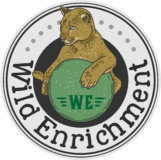Enriched Animal= Happy Animal
Behavioural Husbandry
Animal Enrichment or “Behavioural Husbandry” as its commonly called in the animal care industry is the whole reason why this blog exists, my passion and an extremely important practice that is constantly evolving within animal care. It is basically the act of providing an animal in captivity with stimulation that provokes mental and physical stimulation. What constitutes mental and physical enrichment varies tremendously by species due to capabilities and the animals natural history. Take some of our blog articles for example, we made a zip line to hang food items 20 feet off the ground to as enrichment for a cougar but we also made a giant rolling hay feeder to enrich bison and other grazing hoof stock. We will come back to how to decide on appropriate enrichment items for a species later in this article but why is animal enrichment important in the first place?
Why is Animal Enrichment important?
Animal enrichment is crucial to all captive animals wether they be domestic animals such as dogs cats and horses and wild animals such as cougars, elephants and polar bears. This includes animals in Zoos, Wildlife Sanctuaries and Rehabs, Research facilities, Animal Shelters and of course your home! An animal in the wild is constantly surrounded by the smells, sounds and challenges of its natural environment, this is the same enrichment that has shaped the species for thousands of years. When we remove an animal from that environment we also remove the sources of these sounds, smells and challenges. While removing the challenge of running away from a leopard may be music to the ears of a macaque, removing the need to forage and socialize as a group would be very detrimental for a macaque. Without proper physical enrichment enabling them to display their species specific behaviours the animal may become overweight and inactive, resulting in many health problems that go along with that. For example using enrichment that involves a fox having to dig to their food forces the animal to exhibit a physical behaviour similar what hunting in the wild would do. Perhaps the most pronounced and noticeable to both animal care staff and the public in the zoo world is when an animal begins to become stereotypical.
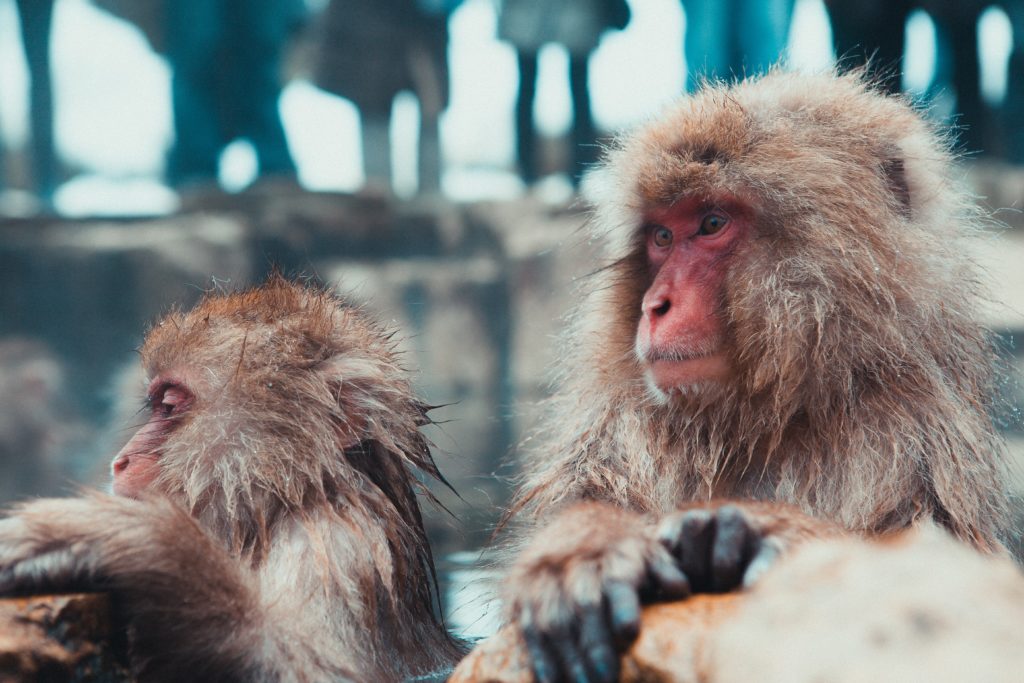
Stereotypical Behaviour
One of the main motivations for many animal care facilities to implement enrichment into an animals environment is the onset of stereotypical behaviour in that animal. Stereotypic behaviour in an animal is defined as an abnormal, repetitive behaviour that serves no obvious function or purpose for the animal exhibiting it. For example, common stereotypic behaviours in animals include head tossing, pacing and even over grooming and excessive chewing. It has been shown in many cases of even very stereotypic animals that increasing the complexity of their environments and the addition of enrichment can severely reduce and even stop the stereotypic behaviours completely.
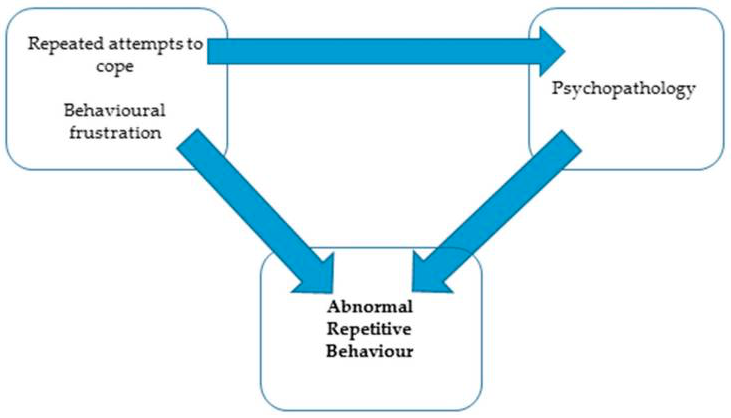
Types of Enrichment

There are many different types of animal enrichment and hundreds of Pinterest boards filled with various items and creations you can give an animal in their environment. But they all break down into two main categories: Active enrichment and Passive Enrichment.
Active Enrichment
Active Enrichment is defined as a piece of enrichment that the animal is required to preform a physical reaction with in order to receive the benefits of the enrichment. These types of enrichment are great to get an animal to preform a variety of natural behaviours as well as dramatically reduce stereotypic behaviours when in use.
- Inanimate Tactile Enrichment
- Inanimate Tactile Enrichment is an inanimate object that the animal has to manipulate and interact with.
- There are many examples of this type of enrichment on this blog including: Dig boxes, Hay Feeders, and Perches.
- These types of enrichment are particularly useful for using animals natural behaviours. For example getting a fox to dig for its food using a specially designed dig box will recreate natural foraging behaviours in the animal.
- Even things as simple as leaving the shells on nuts you are feeding the animal or scattering their food will allow them to interact with the food so that it is enriching for them.
- Tactile enrichment can also be worked into the animals environment using things such as hanging platforms and even teeter totters so that the animal is being enriched even when its not being fed.
- Overall Inanimate tactile enrichment can be a very useful tool for all animal care professionals. And lets be honest, watching a cougar toss around a ball is just plain fun.
- Olfactory Enrichment
- Olfactory enrichment can be easily defined as scent enrichment that uses the animals sense of smell to elicit a response.
- This type of enrichment is potentially the easiest to do out of all the types on this list and therefor it can be done easily on days where more complex cognitive or tactile enrichment cannot be done.
- Examples of this can include a variety of spices, perfumes, bedding from other species and even hair from other species.
- Cognitive Enrichment
- Cognitive enrichment is enrichment that challenges the animal to solve some sort of puzzle or problem to get a food item or a reward of some kind.
- Most of the cognitive enrichment needs to be reinforced with a food item or a training cue, as the animal may need to spend a significant amount of time solving cognitive enrichment and even getting a human to open a puzzle box when they can see there is nothing inside would be a hard task.
- Common enrichment of this type include puzzle feeders but this type of enrichment can also include training from a human due to the fact that the animal needs to figure out what behaviour to preform in order to get a reward.
- Social Enrichment
- Social enrichment is simply enrichment an animal would get from being around conspecifics or other animals in their enclosure.
- This is particularly important for animals that naturally exist in social groups such as most primates and herd animals such as bison. It can also benefit animals that are naturally solitary such as large cats, but precautions must be taken to assure they get along and are introduced properly.
- Human- Interaction Enrichment
- Human interaction enrichment is defined as enrichment that comes from interacting with humans.
- The most common example of this is training sessions with an animal as they have been shown to mitigate boredom, build trust and even prevent aggression while feeding an animal in a group session.
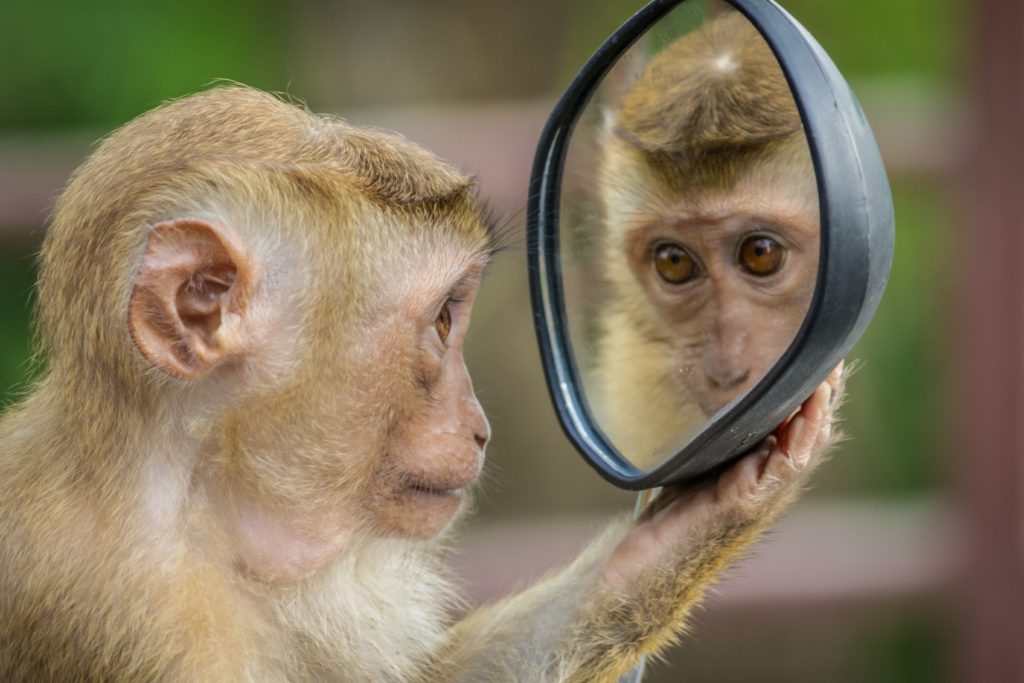
Passive Enrichment
Passive enrichment is defined as enrichment that requires no interaction to provide a sensory stimulation to an animal. These are great for large groups of animals and can be easily used to make an environment more complex and stimulating.
- Visual Enrichment
- Visual enrichment is defined as enrichment that the animal gets from the visual aspects of its environment.
- The most common visual enrichment used in many animal care facilities is changing up their exhibit/ environment, but even things like adding pictures and mirrors to the animals environment will constitute as visual enrichment.
- Designing enclosures so that animals can easily be rotates from one to another can be a great way to easily add visual enrichment to their environment.
- Auditory Enrichment
- Auditory enrichment is enrichment an animal would get from the sounds of its natural environment.
- An animals wild environment is often full of all sorts of noises including rain, the sounds of birds and a plethora or other inhabitants. In captivity it is important to expose an animal to a variety of sounds that mimic the sound of these natural environments.
- A common auditory enrichment for animals in captivity is music as it provides a dual purpose by entertaining animal care staff as well.
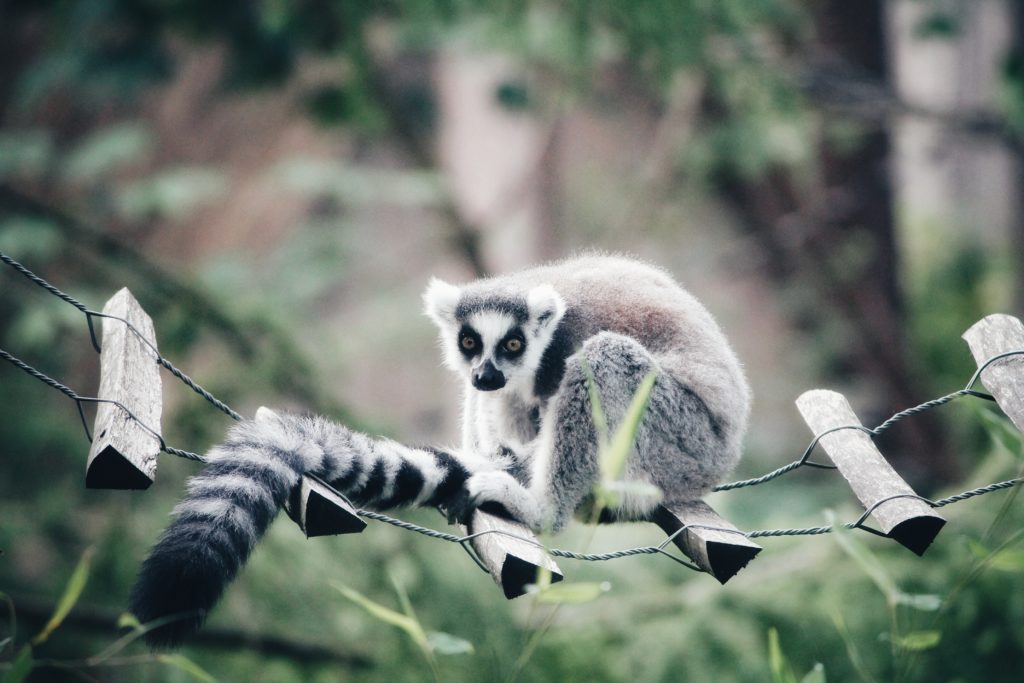
Conclusion
Based on the above information it is clear that incorporating a variety of behavioural husbandry practices into an animal care routine is crucial to the physiological and phycological success of the animal being cared for. We explored many different kinds of animal enrichment, all with unique advantages, disadvantages and species that they can be particularly effective with. Anyone who has worked with animals knows that the combination of Active and Passive enrichment is the best approach to make sure the animal is routinely and meaningfully enriched, they will get bored and used to enrichment quickly and therefor variety is very important. Employing proper enrichment in your routine can be very time consuming and with many issues such as being short staffed can make it difficult to do. A proper enrichment protocol for animals under your care is of vital importance for all animals and must be taken as seriously as other husbandry tasks by the animal care community. Enrichment does not have to be a chore and can be extremely fulfilling and fun to do, so have fun and go out there and make some animals happy!
If you are looking for some enrichment ideas check out our blog or contact me and discover what great enrichment can do for your animals!
